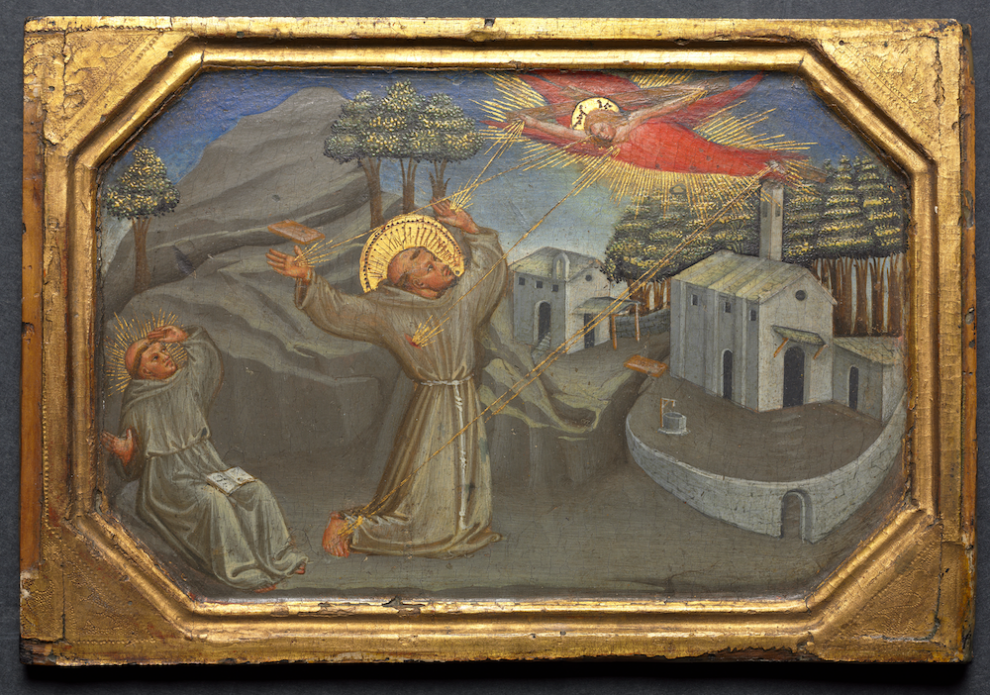Some Catholic traditions are strange. After all, our “big tent” of traditions includes relics—oftentimes the body parts of saints—apparitions, weeping statues, and exorcisms.
Among these strange traditions is one worth examining more closely: stigmata. Stigmata are mystical phenomena where holy men or women (mainly women, including Catherine of Siena) receive some or all of the bodily wounds of Christ’s crucifixion. This tradition is a sign of closeness with God through sharing in Christ’s suffering.
St. Francis of Assisi, the first confirmed stigmatic, found value in the solidarity it gave him with those suffering around him. The root of stigmata is the word stigma, which means a “mark of disgrace” as judged by those who have power and dominance in a society. Francis was well known for his embrace of poverty, peacemaking, and the most “stigmatized” people of his time: lepers.
In 1224, while meditating deeply on Jesus’ passion, Francis saw a vision of a seraph fixed to a cross. He emerged from the vision and—to the astonishment of his confreres—exhibited the wounds of Christ on his own body. He then wrote “Prayer in praise of God, Given to Brother Leo,” which speaks of the many beautiful names for God.
In light of this story, stigmata remain relevant today in suggesting how Catholics can imitate Christ: solidarity with all who are denigrated by the powerful and dominant, be it through race, gender, sexual orientation, poverty, disability, age, immigration status, culture, or religion. The tradition and symbolism of stigmata may be strange, but they connect us not only with the sufferings of Christ but also with the sufferings of our sisters and brothers around the world. In this way, stigmata become an “ordinary” mystical symbol of solidarity with the sinned-against rather than an “extraordinary” mystical experience of God open only to the spiritually elite.
This solidarity resonates with the ministry of Pope Francis and his vision of the church as a field hospital. Perhaps this is the greatest gift the mysterious tradition of stigmata can offer: To meet God we must meet others in their woundedness. We are called to carry burdens that are not ours in service to the stigmatized and sinned-against in the world.
If one seeks to follow Christ, one must listen to, understand, embrace, and, if possible, bind the wounds of those stigmatized as the wounds of his or her own body and family. As St. Paul wrote, “If one member suffers, all suffer together with it” (1 Cor. 12:26).
This article also appears in the April 2020 issue of U.S. Catholic (Vol. 85, No. 4, page 49). Click here to subscribe to the magazine.
Image: Bicci di Lorenzo via Wikimedia Commons












Add comment